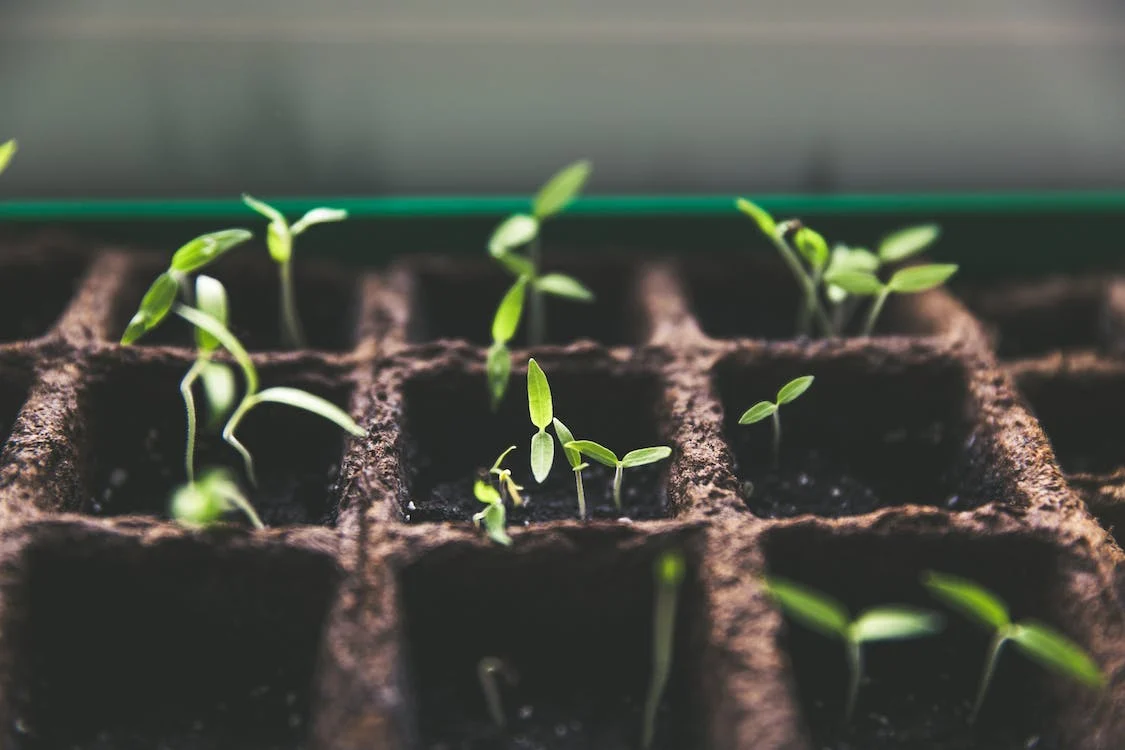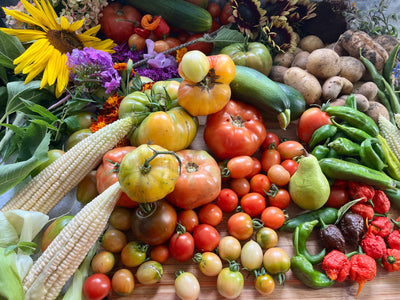Despite all the technological advances in farming and gardening, there are still simple, effective, and nearly free ways to help your plants flourish. Animals and bugs can destroy your survival garden, but the right species can also help it thrive. Plants and animals often share a symbiotic relationship that helps pollinate your garden, keep pests at bay, lower your costs, and improve soil quality.
The trick is figuring out which animals help your garden the most and which ones need to go. Here’s a run-down of ten animals that help your survival garden grow.

1) Worms
Earthworms are integral to your garden's success and are pros at soil aeration and improving soil infiltration. They wind their way into the soil and keep things mixed up and moisture flowing freely. Their excrement is also highly valuable for its ability to form soil aggregates by combining minerals and organic matter.
Beyond their ability to keep your garden hydrated and nourished, they also help break up compacted soil. When roots grow too large or your soil is too hard, it can make it difficult for plants to soak up necessary nutrients. Earthworms are skilled at breaking up your soil so your plants can flourish.
2) Chickens
If you want to lessen your reliance on chemicals and manufactured supplies, raising chickens can transform your survival garden technique. Chickens pick off harmful pests and their droppings help create nutrient-rich composting. Over time, their calcium rich manure actually raises the pH levels of your garden to grow thriving plants and grasses.
Like worms, chickens can help turn over your soil and help aerate the ground to improve your survival garden's fertility. Of course, chickens love to snack on worms, so they may overzealously gobble up these helpful critters.
On the downside, chickens don't discriminate and love to eat anything from bugs to your best heirloom seeds. If you want your backyard chickens to roam and take care of your pests, they’ll need some supervision before putting them back in an enclosed area.
3) Bats
Bats reduce the population of mosquitoes and insects that put a damper on your outdoors. It’s true mosquitoes may not bother your garden and plants, but will cause a nuisance to you when trying to work in your yard. Beyond misquotes, bats will also snack on moths, beetles, and other bugs that can damage the health of your garden.
Beyond pest control, bats are also surprisingly good pollinators and seed dispensers through their consumption and excrement. Their insatiable appetite for bugs ultimately provides a healthy pesticide alternative. Bats eat enough to save more than $1 billion a year in crop damage and pesticide costs in the U.S. corn industry alone.
4) Birds
Bats and birds are a good tag-teaming pair to eliminate your daytime and evening pests. Birds also feed on thousands of insects, especially when feeding their babies during the spring season. Some birds will dig for seeds, but they'll also consume seeds that keep weeds from growing and taking over your garden. You can attract more bats to your property with the help of bat houses to give them a safe place to sleep by day.



Like bats, birds are also good pollinators and will assist with seed distribution. Where there’s a healthy garden, birds will show up and start eating. But to make it a hospitable environment, add a bird bath or feeder to your property to keep welcoming them back.
5) Lady Bugs
Not all bugs are bad for your garden and some will even voraciously consume your worst pests. Lady bugs have an appetite for aphids, which are detrimental to your survival garden’s sustainability. When aphids arrive in mass, they turn your leaves yellow and stunt your shoots before eventually leaving behind a sticky film that turns to mold and fungus.
6) Garter Snakes
It's often startling to come across a snake in your yard, but garters are harmless to humans and will quickly eat the pests that destroy your garden. Garters are often called “The Gardener’s Friend,” or “Gardener Snakes,”and enjoy devouring cucumber beetles, toads, slugs, and worms and after warming up in the sun will go back to the borough and leave you alone.
If you’re skittish around snakes, don’t worry. Garters are normally shy and aren't looking for a fight. Although they do produce venom, it's so mild you might only see some swelling in the rare event you got bit. But the good news is garter snakes won’t bite unless provoked and are more apt to slither away and hide.
7) Butterflies
Butterflies are gorgeous additions to your survival garden, but also help pollinate so your plants can reproduce. If you want to attract more butterflies to your yard, you can plant milkweed, a favorite of monarch caterpillars or the pawpaw tree for zebra swallowtail caterpillars. Adult butterflies are also attracted to colorful blossoms, including red, yellow, orange, punk, and purple with flat tops or short flower tubes.
8) Frogs
Toads and frogs feast on insects, including snails, slugs, beetles, and mosquitoes that are prone to hanging around your garden. One frog will eat up to 100 insects in one night and complement your bats’ efforts to deal with nighttime pests.
If you're a survival gardener, you're probably already reducing or eliminating your reliance on pesticides. The practice is especially important if you want to keep frogs and toads around. Their skin is highly malleable and easily passes toxins and pollutants into their body.
9) Lizards
Lizards eat garden critters including slugs and harmful insects. The fact lizards are hanging around is a good sign that your garden is healthy and pesticide free. You can make lizards more welcome in your garden by adding some stones, bricks, or old wood for it to take shelter in and escape the heat or cold. Loose materials that they can hide and borrow in work well and give them a hiding spot before pouncing on insects.
10) Bees
Up to 80% of the earth's flowers are pollinated by bees, making them an integral part of any survival garden. When bees pollinate flowers your plants flourish and can produce fruits and seeds needed to yield fruits and vegetables.
Bees also help produce additional food sources, like honey, that can flavor your food and offer nutrients like calcium, copper, iron, magnesium, manganese, phosphorus, potassium and zinc. Beeswax and other bee byproducts that create balms and lotions are also a win for garden survivalists. Of course, if you want to harness the byproducts of bees you’ll also need to set-up a beehive and learn some skills for safe harvesting.

Next Steps
There are plenty of animals that will help your survival gardening efforts if you just let them do their thing and make your property more hospitable. Or you can take the first step and add bat boxes, bird feeders, and a chicken coop to bring the animals to you.
Of course, just like anything, too many animals is usually too much of a good thing. Chickens may take care of your bugs, but are likely to eat your seeds along with it. Keep tabs with what’s going on in your survival garden, make changes as needed, and keep an open-mind to bugs and critters that will take care of damaging pests.
Ready to get started building your own seed vault for your homestead? We provide a one-stop shopping experience for your survival gardening needs. Browse our survival seeds, kits, and supplies, or purchase our pre-packaged options.











